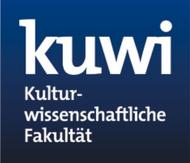Unthinking Language: Paths towards Posthumanist Understandings of Human Interaction
In this international and interdisciplinary symposium, we seek to explore human communicative behavior beyond the idea of languages as ordered grammatical and lexical resources that are used by particular cohorts of people. In line with contemporary posthumanist thought that questions body-mind/ nature-culture dualisms (see e.g. Braidotti 2013, Pennycook 2018, Pepperell 2003), we particularly focus on the corporal, material and technological conditions of human interaction and on the relationship between material realities and discourse. Watch the videos by Alastair Pennycook, Annelies Kusters, Carmel Vaisman, Crispin Thurlow, Erez Levon, Marie-Theres Fester-Seeger, Michele Zappavigna, Miriam Lind and Stephen Cowley.
Organised by Britta Schneider and Theresa Heyd
In this event, we radically question the idea of human language as appearing in immaterial cognitive systems. Such an understanding is usually explained in terms of the canon of 20th century language theory, in particular Saussurean structuralism. Human interaction is here produced as materializing in linear, abstract and systemic entities, ordered along territorial, namely national lines. As a consequence, quasi-natural national grammars are imagined as located in individual brains, activated by speakers to convey referential information. And yet in such concepts, the constant altering, multimodal simultaneity, interactivity, social positionality, technological dependency and materiality of human meaning-making is erased and made invisible. The same is true for the fact that these imaginations of individual and orderly speaking are powerful social authorities of exclusion and inclusion. In a broader sense, the idea of language as systemic grammar is embedded in humanist, and thus human-centered traditions stemming back to enlightenment roots, in which the binaries of human vs non-human, nature vs culture and mind vs body became crucial epistemological foundations, shaping thought, social order and the way the relationships of humans and their natural and material environment is envisioned.
In an age of paradigmatic changes in our societies, triggered by technological development, implying digital interaction, complex forms of transnational communication and AI technologies, the conception of human languages as linear, autonomous phenomena, ordered according to territorial political boundaries, becomes increasingly dubious. We are today confronted with a mundane reality of the simultaneous presence of diverse words, gestures, signs, sounds, images, scripts, videos that travel globally in very short instances of time and that are co-constructed via digital programming. It is thus time to reconsider a restricted notion of language as a priori grammar that has dominated public and academic discourse in Western culture since early modernity – and that, at the same time, has co-produced these discourses.
In this international and interdisciplinary symposium, we seek to explore human communicative behavior beyond the idea of languages as ordered grammatical and lexical resources that are used by particular cohorts of people. In line with contemporary posthumanist thought that questions body-mind/ nature-culture dualisms (see e.g. Braidotti 2013, Pennycook 2018, Pepperell 2003), we particularly focus on the corporal, material and technological conditions of human interaction and on the relationship between material realities and discourse. Asking how interaction, meaning and understanding comes into being, we scrutinize communicative activity as dialectically embedded in its bodily, natural, material and technological environment. We thus focus on aspects that have been considered as marginal to communication in traditional linguistics, where these have been typically conceived of as ‘the context’ of communication. In the tradition of media theory, we assume that the message can never be understood without considering the forms of mediation in which it takes place, which at the same time opens paths to a posthumanist understanding of cognition as ‘distributed’ among people, things and places (on distributed cognition and distributed language, see Cowley 2011, Hutchins 1995).

Share article: